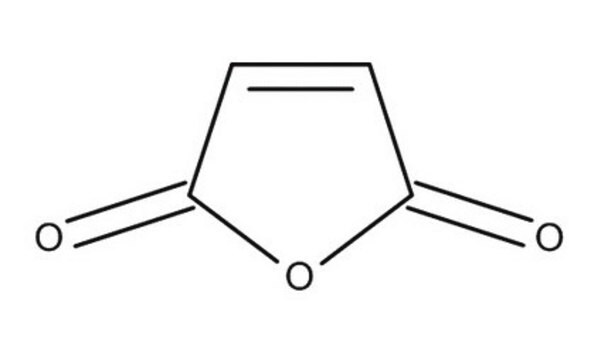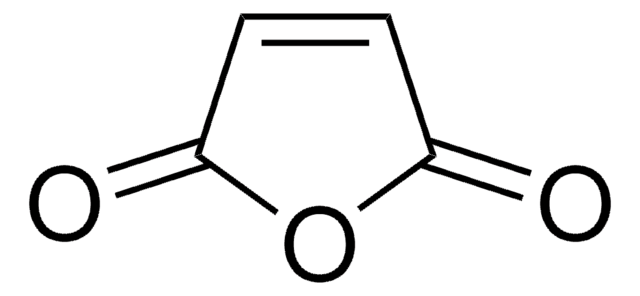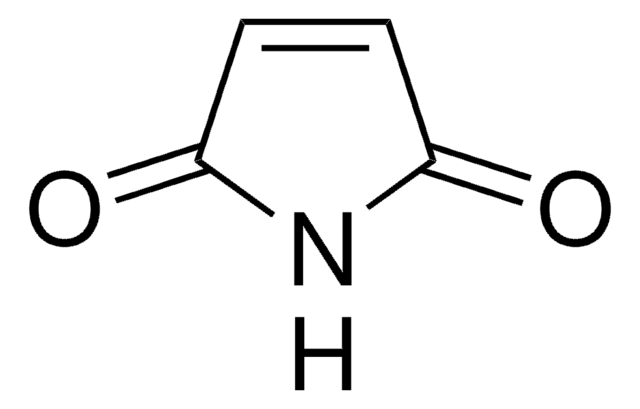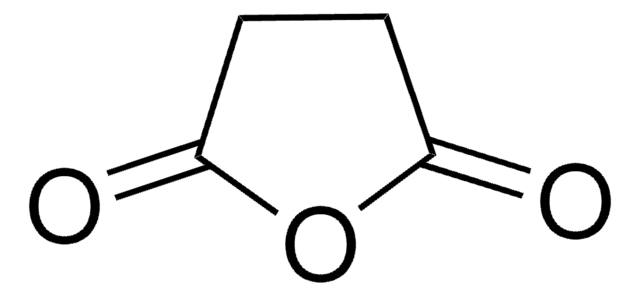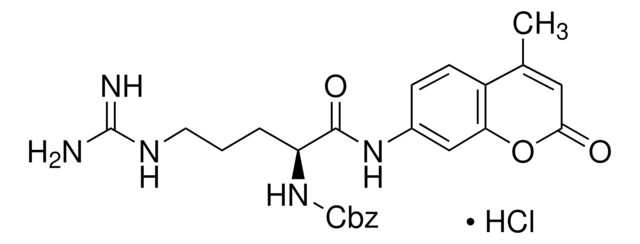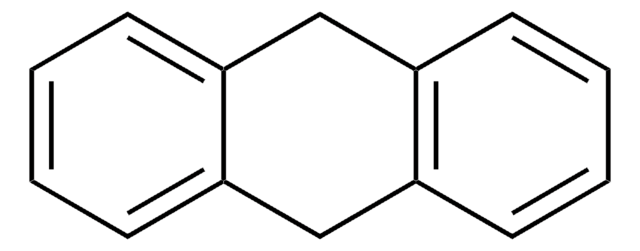Kluczowe dokumenty
M188
Maleic anhydride
99%
Synonim(y):
2,5-Furandione
About This Item
Polecane produkty
gęstość pary
3.4 (vs air)
Poziom jakości
ciśnienie pary
0.16 mmHg ( 20 °C)
Próba
99%
temp. samozapłonu
870 °F
granice wybuchowości
7.1 %
bp
200 °C (lit.)
mp
51-56 °C (lit.)
ciąg SMILES
O=C1OC(=O)C=C1
InChI
1S/C4H2O3/c5-3-1-2-4(6)7-3/h1-2H
Klucz InChI
FPYJFEHAWHCUMM-UHFFFAOYSA-N
Szukasz podobnych produktów? Odwiedź Przewodnik dotyczący porównywania produktów
Opis ogólny
The structure of maleic acid consists of four carbon molecules along with carboxylate groups on either ends, with a double bond between the central carbon atoms. The anhydride of maleic acid has five atoms in its cyclic molecule, the unsaturated bond undergoes free radical polymerization in the presence of an initiator.
Zastosowanie
- In the grafting process of high-density polyethylene (HDPE) by the monomer microencapsulation technique, which enables the introduction of enhanced functionality and improved properties to the polymer for functional coatings, membranes, or surface treatments, adhesives, and coatings.
- In the functionalization of polylactic acid (PLA) and acts as a coupling agent in natural fiber biocomposites. The functionalization improves the compatibility and interfacial adhesion between PLA and natural fibers, leading to enhanced mechanical properties and expanded applications of the resulting biocomposite materials.
- Maleic anhydride may be used in the synthesis of unsaturated polyester resins and as a reactant in synthesizing important products such as agricultural chemicals, lubricant additives, and food acidulatents.
Postać fizyczna
Hasło ostrzegawcze
Danger
Zwroty wskazujące rodzaj zagrożenia
Zwroty wskazujące środki ostrożności
Klasyfikacja zagrożeń
Acute Tox. 4 Oral - Eye Dam. 1 - Resp. Sens. 1 - Skin Corr. 1B - Skin Sens. 1A - STOT RE 1 Inhalation
Organy docelowe
Respiratory system
Zagrożenia dodatkowe
Kod klasy składowania
6.1C - Combustible acute toxic Cat.3 / toxic compounds or compounds which causing chronic effects
Klasa zagrożenia wodnego (WGK)
WGK 1
Temperatura zapłonu (°F)
217.4 °F - closed cup
Temperatura zapłonu (°C)
103 °C - closed cup
Środki ochrony indywidualnej
Eyeshields, Faceshields, Gloves, type P3 (EN 143) respirator cartridges
Wybierz jedną z najnowszych wersji:
Masz już ten produkt?
Dokumenty związane z niedawno zakupionymi produktami zostały zamieszczone w Bibliotece dokumentów.
Klienci oglądali również te produkty
Produkty
Molecular Layer Deposition of Organic and Hybrid Organic-Inorganic Polymers
Osadzanie warstw atomowych spełnia różne potrzeby, w tym miniaturyzację urządzeń półprzewodnikowych i powlekanie nanocząstek.
By altering the physicochemical properties, smart or intelligent drug delivery systems can be designed to deliver therapeutic molecules on-demand. Learn more about the application of stimuli-responsive materials in drug delivery.
Nasz zespół naukowców ma doświadczenie we wszystkich obszarach badań, w tym w naukach przyrodniczych, materiałoznawstwie, syntezie chemicznej, chromatografii, analityce i wielu innych dziedzinach.
Skontaktuj się z zespołem ds. pomocy technicznej